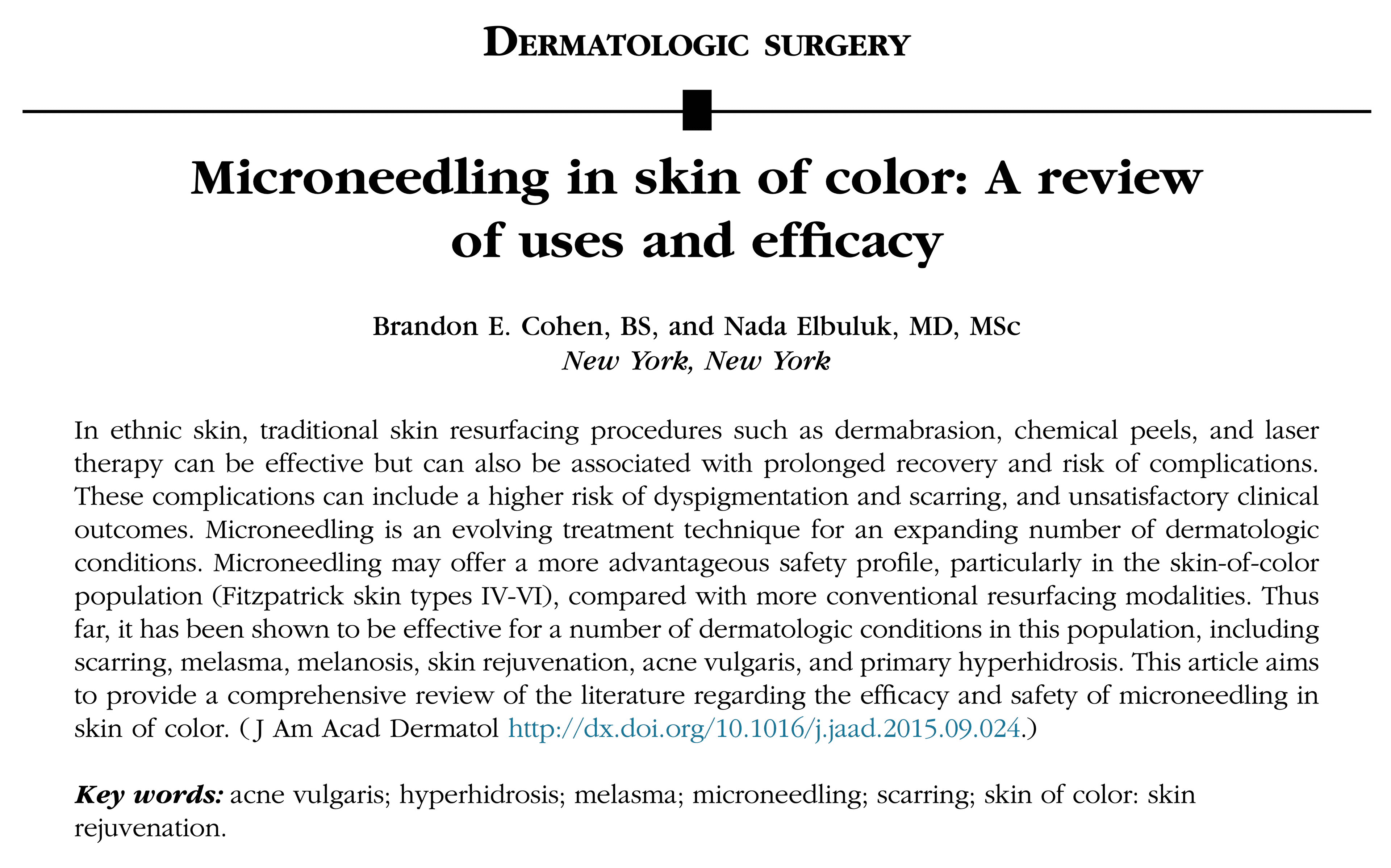Summary: microneedling in skin of color
Troels Marstrand, Ph.D.
April 18, 2024


We read a lot of research articles, and thought it could be useful to summarize the key findings from those that we find useful. We expect this to be a returning themed blog post where we just list the most essential findings and maybe add a comment or two.
The article in this blog post is: "Microneedling in skin of color: a review of uses and efficacy" by Cohen and Elbuluk, 2016.
What is microneedling?
Shortly, microneedling has emerged as a promising treatment modality for a variety of skin concerns, particularly for individuals with skin of color (Fitzpatrick skin types IV-VI). This minimally invasive procedure involves using a device with fine needles to create controlled micro-injuries in the skin, stimulating collagen production and skin rejuvenation.
What is the effect of microneedling?
Cohen and Elbuluk then finds a range of published studies on skin of color and concludes:
Microneedling offers a more favorable safety profile compared to traditional resurfacing procedures like dermabrasion, chemical peels, and laser therapy, which can cause prolonged recovery and complications such as dyspigmentation and scarring in darker skin types.
Microneedling has been shown to effectively treat a range of dermatologic conditions in skin of color, including:
Atrophic acne scars
Melasma and other types of hyperpigmentation
Signs of aging (fine lines, wrinkles, rough skin texture)
Active acne breakouts
Primary hyperhidrosis (excessive sweating)
Compared to ablative procedures, microneedling preserves the epidermis, promoting faster recovery and reducing risks of infection, scarring, and pigmentary changes. Unlike some lasers, microneedling does not target specific chromophores in the skin, minimizing impact on pigmentation.
Microneedling can be combined with other treatments like subcision, chemical peels, topical depigmenting agents, or radiofrequency for enhanced results. However, combination therapies may increase risks of side effects like post-inflammatory hyperpigmentation.
The most common side effects of microneedling in skin of color are transient, such as procedural pain, erythema, edema, and crusting. Serious adverse events like scarring or dyspigmentation are rare when the procedure is performed correctly.
Overall, current evidence suggests microneedling is a versatile, practical, and safe treatment option for a variety of skin concerns in the skin of color population. While larger controlled studies are still needed, microneedling offers a promising addition to treatment options for this population when performed by properly trained skincare providers.
What is important to remember in this review is that the population sizes are often small to moderate (between 1 and 70). However, they nicely list all the original papers in a table for easy reference and deeper dives for those that wish to do so.
Read next


